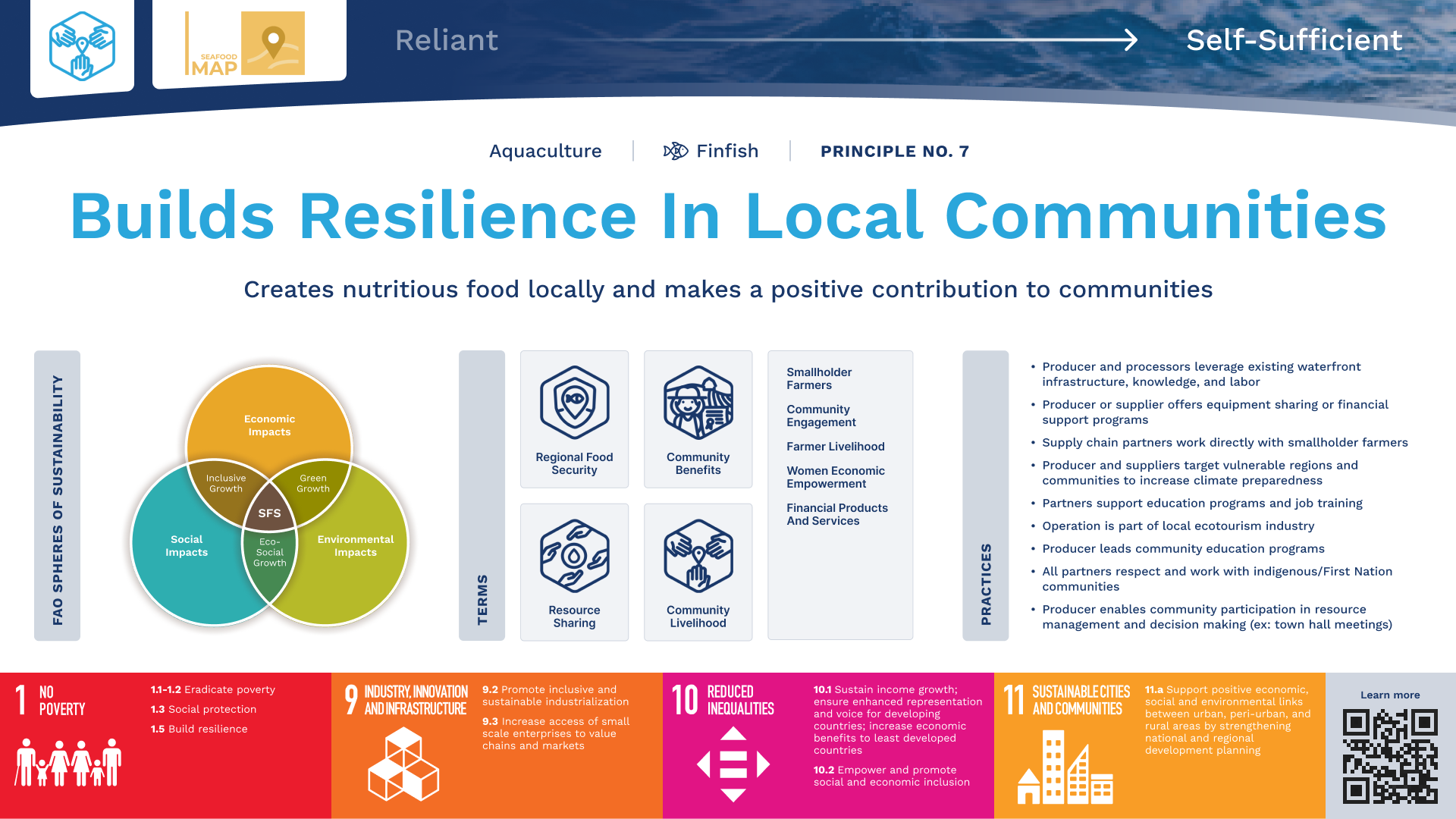Aquaculture – Principle 7 | Seafood MAP
Working waterfronts have been central to coastal communities’ culture and economy, but now face declining wild stocks, unrenewed permits, and rising sea levels. Aquaculture, in its incredible diversity of species and production methods can mobilize workers in coastal communities, leverage existing infrastructure, and benefit from the generational knowledge of fishers and farmers. When producers are embedded in their communities and create space for public collaboration and decision-making, they enable bottom-up place-based solutions, economic security, and regional food sovereignty.
United Nations Industrial Development Organization
Key Topics Explained
How can aquaculture improve livelihoods and social equity?
There is a general consensus that global demand for seafood is growing and more supplies will be from farmed seafood as the supplies’ trend from marine fisheries has been on the decline. Thus, there is a huge opportunity for aquaculture to further expand and provide more job opportunities for many people in particular in the developing countries. For coastal communities which normally very much depend on capture fisheries, now they have higher and more stable income through aquaculture. In many countries in Asia, like in Indonesia for example, small scale fishermen have better income by farming seaweed along the coast. Many of them farm high value species for export market such as shrimp and grouper which provide them with much higher income than fishing. With the growing demand for fish in the domestic market, farmers (whether agriculture and fish farmers) also grow fish on their lands for farming catfish, tilapia, pangasius, carps and also ornamental fishes. With technology development they even farm fish in their back yards with limited spaces. There are many cases paddy farmers convert their land for fish farming that give better income or do the paddy cum fish for better results.
Many aquaculture business need small investment such as seaweed with better return, hence may smallholders can get access to this business. With increasing income coming from aquaculture ultimately will also create social and gender equity. With better income, fish farmers can provide better education for their children. Since fish farming in developing countries mainly run as family business, women involvement in aquaculture also significant along aquaculture value chains from farming, processing up to marketing/trading, unlike in the marine capture fisheries. In seaweed value chain for example, women’s involvement are dominant starting from preparing the seeds (tie up seeds), maintaining seaweed during grow out, drying and trading as well as processing it.

N/A